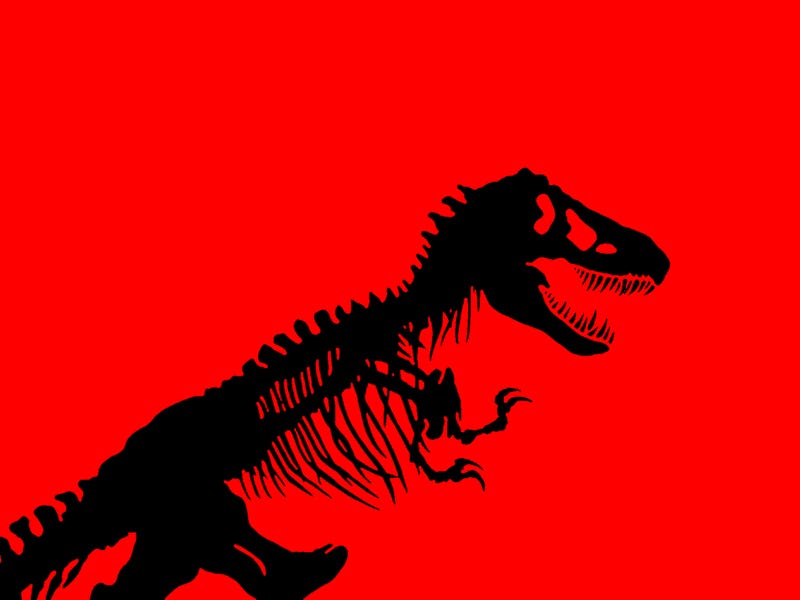How Jurassic Park’s Logo Designer Made Dinosaurs A Brand
Sequencing the design DNA of one of sci-fi’s great icons.

If you want to make designer Chip Kidd blush (or at least get him to tell you he’s blushing over email) compare his 1993 book jacket for Michael Crichton’s Jurassic Park to the Star Wars font or the Starfleet insignia. Still, he’ll reluctantly accept the compliment because he knows that — as seminal as those other icons are — his T. Rex skull is just as important, albeit for a slightly different reason.
If you think you don’t know what the 1993 book jacket for Jurassic Park looks like, well, you do: The park logo from the movie was cribbed from the original Alfred A. Knopf printing.
As Kidd tells it, the idea for the book jacket came easy: He took a trip to New York’s Museum of Natural History, wandered through the gift shop and picked up a book. Inside, he saw rendering below. A photocopier, tracing paper, and black pen later, Kidd made history.
He’d go on to discuss the experience at length in a TED Talk (as one does).
But what’s interesting about the design he settled on is that it proved so malleable and so popular.
“The movies are so good and resonate with so many people, and the logo worked for all of it,” Kidd told Inverse in an email. “I’d say it was the first successful branding campaign for dinosaurs (sorry for the ‘B’ word), though that wasn’t what I was initially intending at all.”
Since there were plastic molds, dinosaurs have been a toybox mainstay,but Jurassic Park took the terrible lizard brand to the next level. A year after its release, JP merchandise hit the $1 billion mark. And the logo on those Kenner action figures, Sega games, and children’s books, from then to the foreseeable future? A grinning T. Rex head, on the verge of becoming whole. Kids always loved dinos, but Kidd gave them the visual vocabulary required to be better consumers. They could buy the Jurassic and bring it home. Thanks to Kidd, they knew what that looked like.
In short, the Tyrannosaur skull had legs.
It’s back for Jurassic World, having been briefly and rather stupidly replaced by a Spinosaurus skull for Jurassic Park III. It’s so iconic and clean and welcome, the sort of thing you’d pick up in a museum and take home — the sort of thing that stays with you.